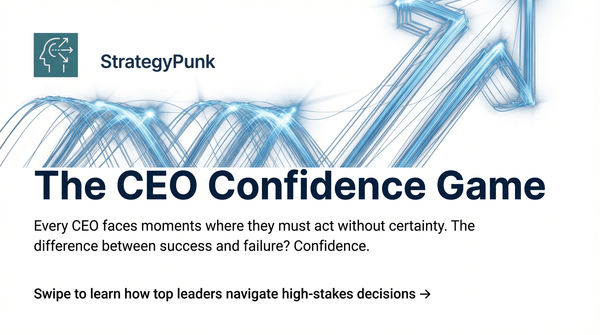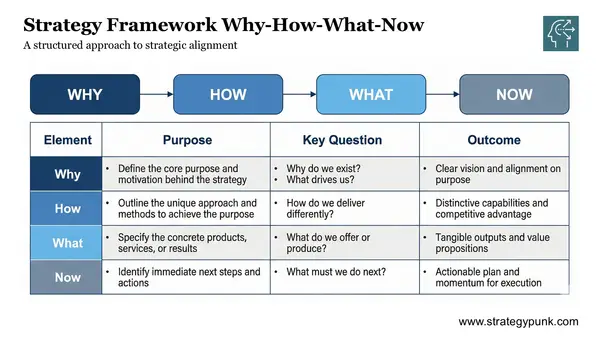Strategic Decision Framework: Context, Options, and Recommendations
Strategic Decision Framework with Context-Options-Recommendations flow. Build stakeholder consensus effectively. Free PowerPoint template.
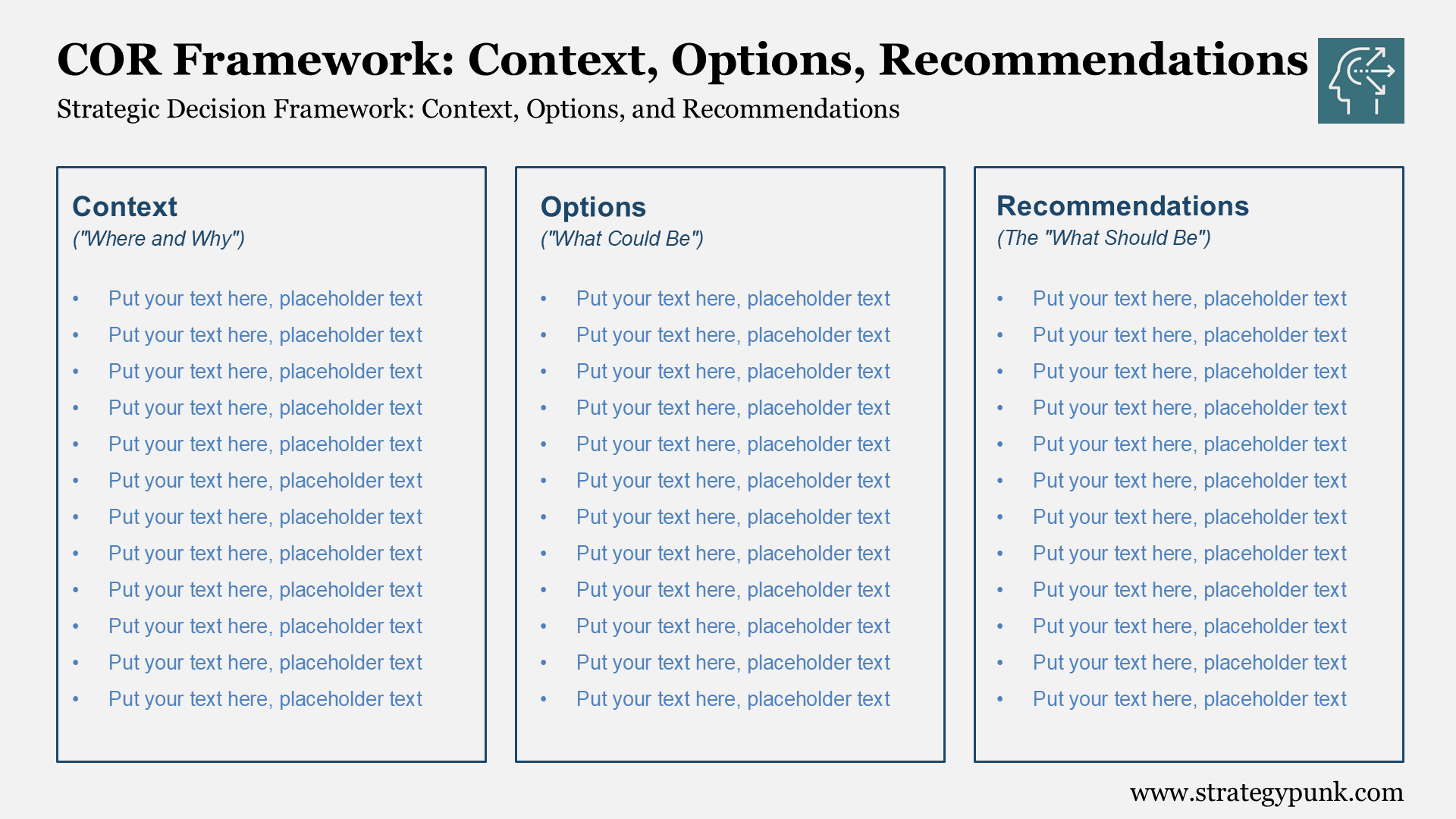
Why Most Strategic Decisions Fail (And How the COR Framework Can Help)
We've all been there. You walk into a meeting thinking you're about to solve a pressing business challenge, only to find yourself two hours later with everyone talking past each other, defending their favorite solutions, and no clear path forward.
Sound familiar?
The problem isn't that people lack good ideas — it's that we jump straight to solutions without first agreeing on what we're trying to solve. One person thinks we need better technology, another wants to restructure the team, and someone else is convinced it's all about budget allocation. Meanwhile, the real issue remains buried under assumptions nobody bothered to check.
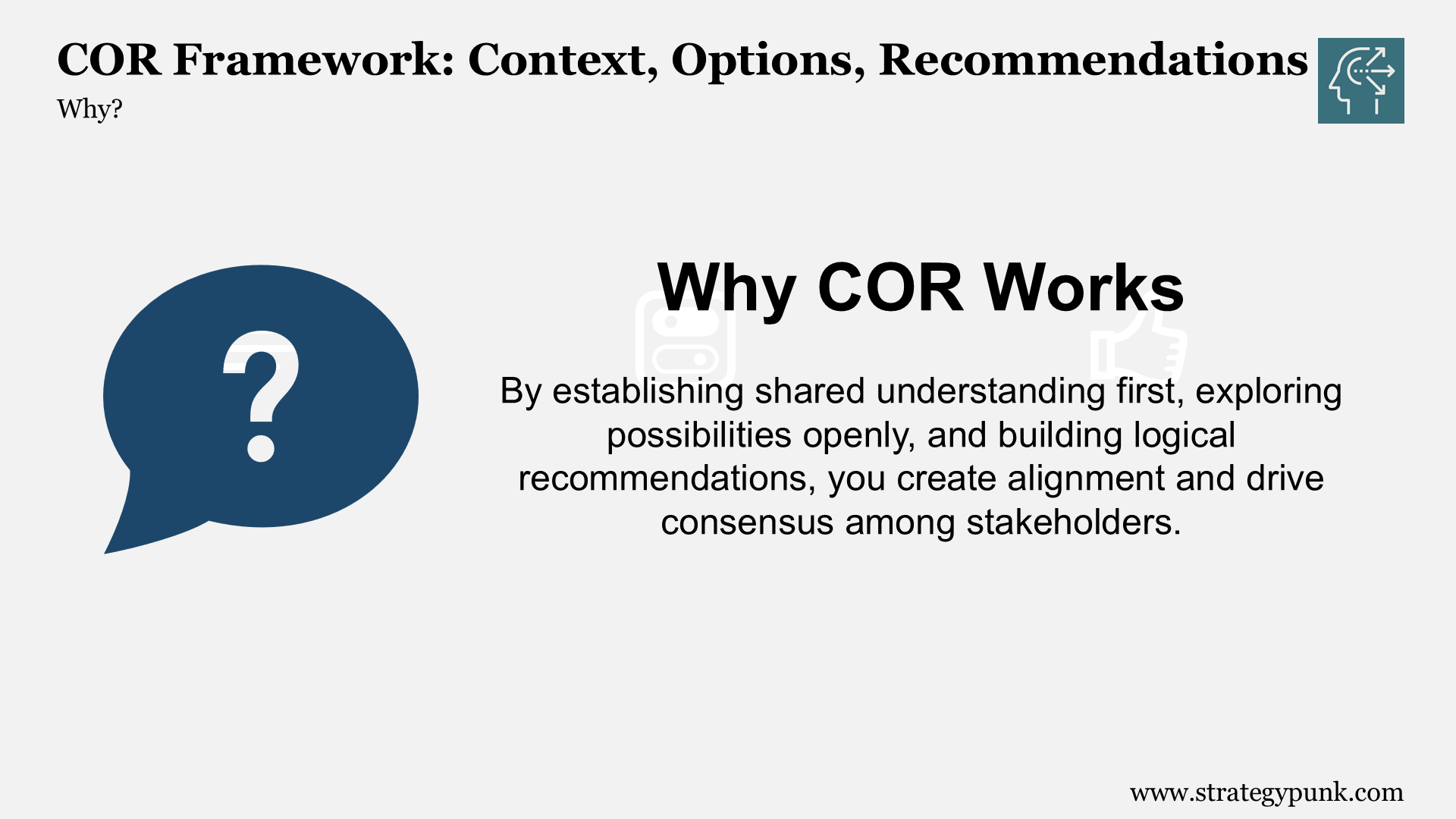
That's precisely why the Context, Options, and Recommendations (COR) framework is a game-changer for strategic decision-making. Instead of letting meetings devolve into solution battles, COR forces everyone to start with the same foundation: understanding the actual situation before exploring potential solutions.
Think of it as giving your team a roadmap for productive disagreement. When stakeholders can see how you moved from "here's what's happening" to "here are our choices" to "here's what we should do," they're far more likely to get on board—even if it wasn't their preferred option.
The beauty of this framework lies in its simplicity.
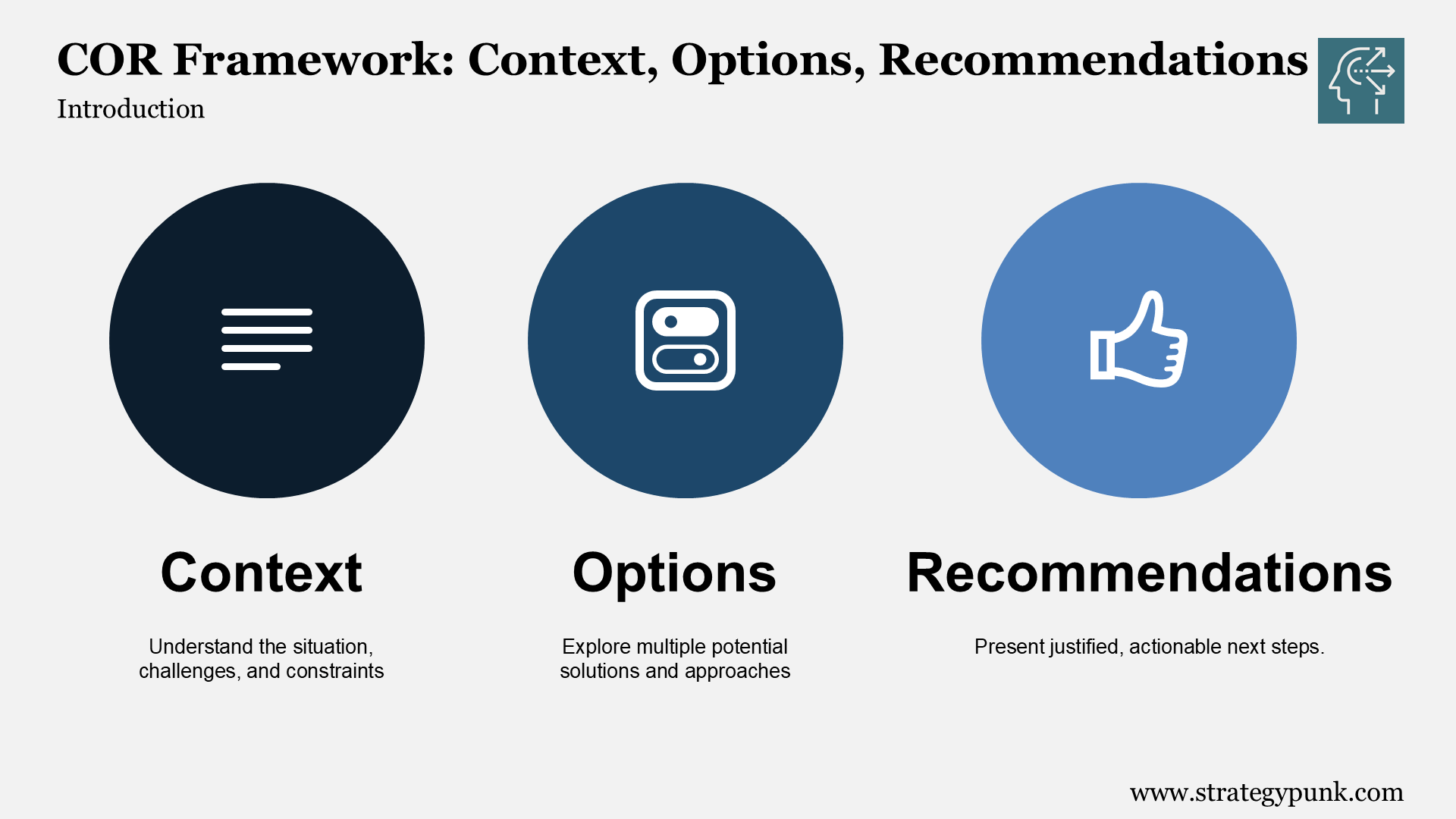
Three columns, three questions: What's going on? What could we do about it?, What should we do about it?
Yet this straightforward structure has helped countless teams cut through complexity and make decisions that stick.
Ready to transform how your team approaches strategic decisions?
We've created free PowerPoint and PDF templates to implement the COR process in your organization.
Let's explore how this framework can transform your most challenging strategic decisions into clear, aligned action plans.
The Core Idea
The template visually guides stakeholders through a structured thought process, starting with understanding the situation, then exploring possibilities within that situation, and finally arriving at well-reasoned recommendations.
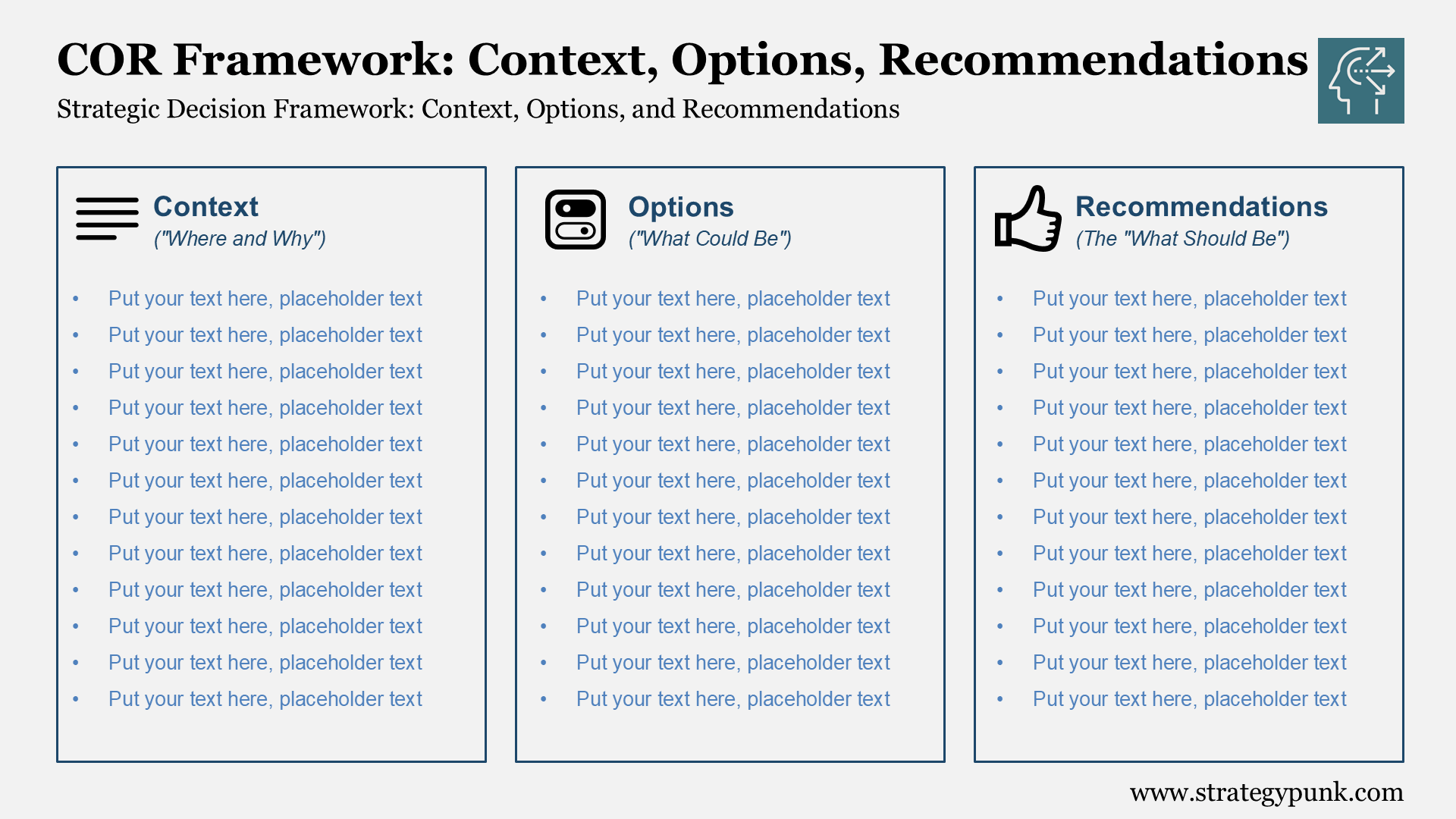
The Three Columns
Column 1: Context (The "Where and Why") - here's what's happening
Purpose: To establish a shared understanding of the current situation, the underlying needs, challenges, and opportunities. This sets the stage for why specific options are even relevant.
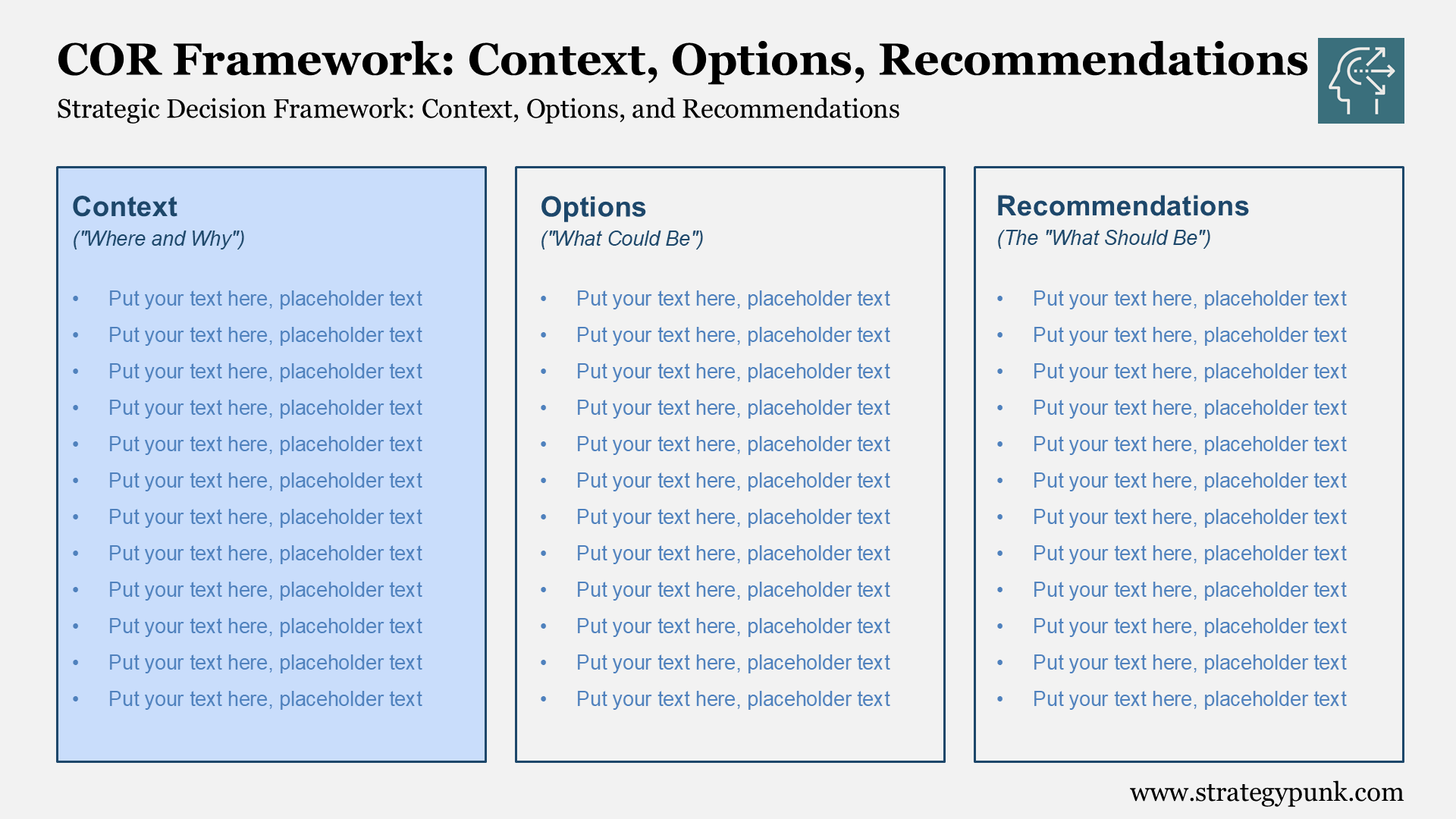
Key Elements:
- Situation Overview: A concise description of the current state of affairs.
- Key Challenges/Problems: Clearly defined issues that require attention and resolution.
- Underlying Needs/Goals: The fundamental requirements or objectives that need to be met.
- Constraints/Dependencies: Limitations or factors that influence potential solutions.
- Stakeholder Perspectives (briefly): Acknowledging different viewpoints and priorities.
Guiding Questions:
- What is the current situation?
- What problem are we trying to solve?
- What are our objectives?
- What factors limit our choices?
- What are the different stakeholders' primary concerns?
Column 2: Options (The "What Could Be") - here are our choices
Purpose: To brainstorm and present a range of viable options or potential solutions that address the identified context. This encourages exploration and avoids premature focus on a single solution.
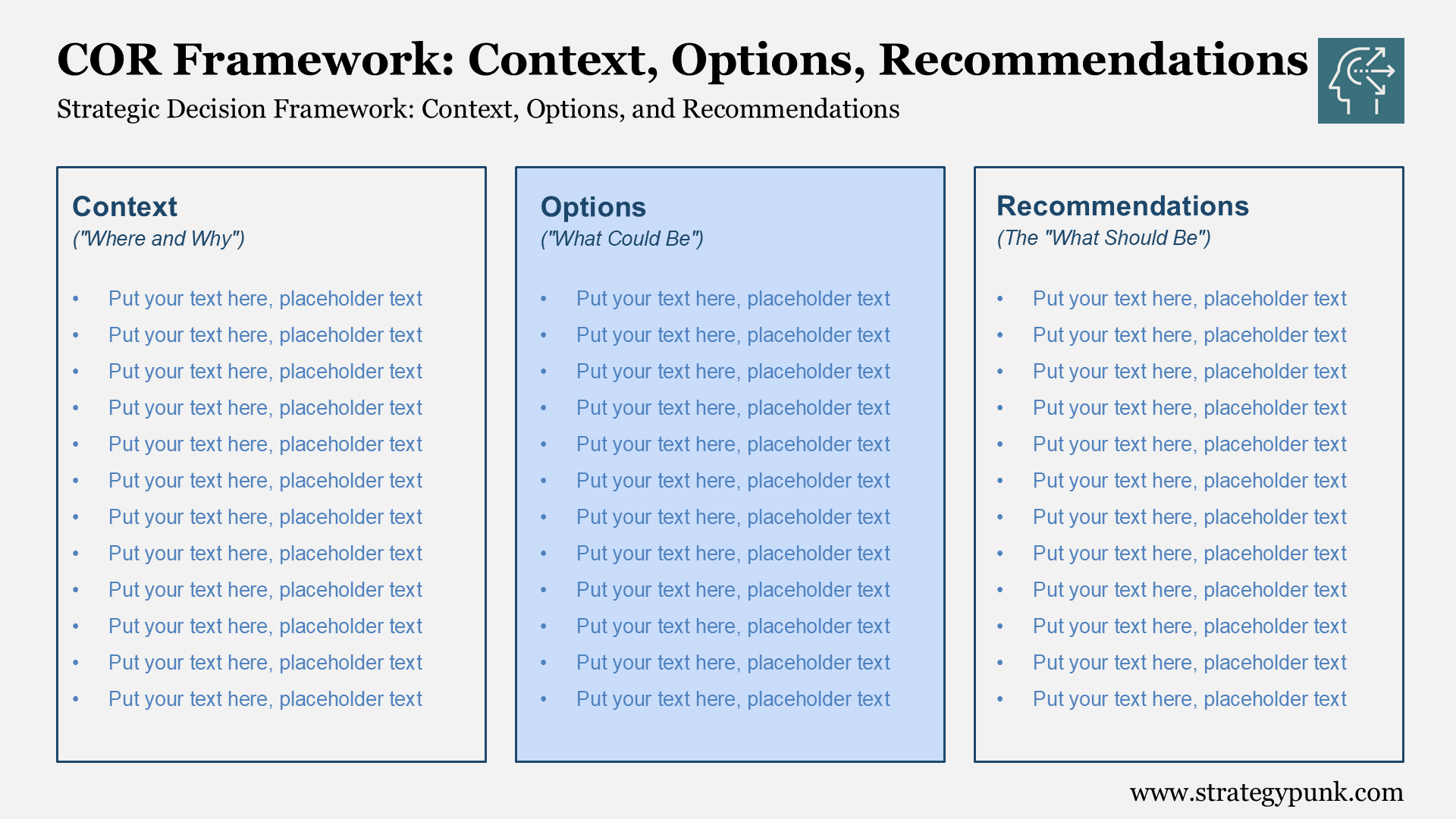
Key Elements:
- Option 1: A clear and concise description of a potential course of action.
- Option 2: Another distinct potential course of action.
- Option 3 (and so on): Presenting a range of diverse possibilities.
- Brief Description of Each Option: Highlighting the core features and approach.
- Potential Benefits (initial thoughts): What positive outcomes could this option deliver?
- Potential Drawbacks (initial thoughts): What are the potential risks or challenges?
Guiding Questions:
- What are the different ways we could address the situation?
- What are the core components of each potential solution?
- What are the initial pros and cons of each option?
Column 3: Recommendations (The "What Should Be")
Purpose: To present well-justified recommendations based on the evaluation of the options within the defined context. This provides clarity on the proposed course of action.
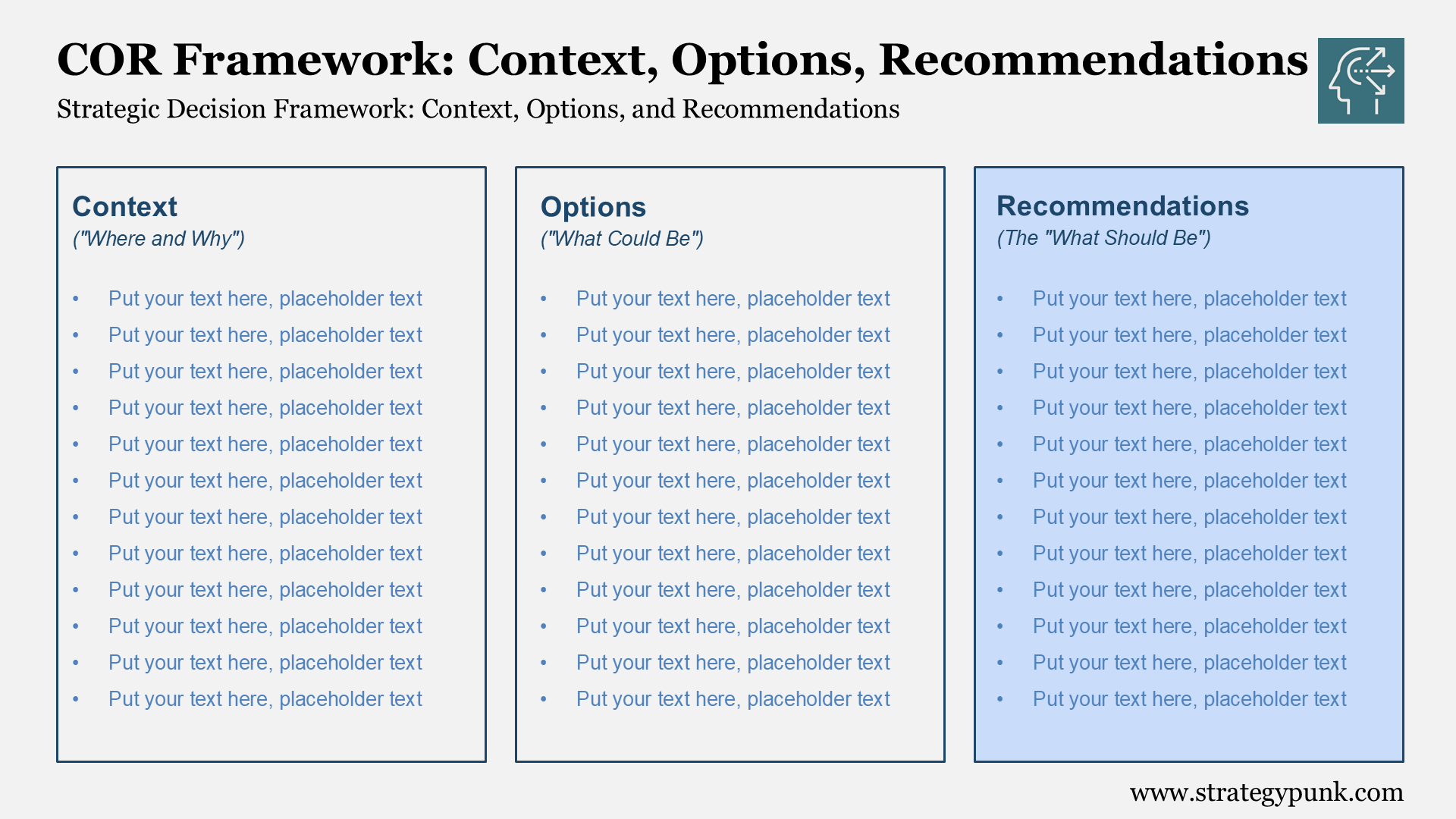
Key Elements:
- Recommended Option(s): Clearly state the proposed course of action.
- Justification/Rationale: Explain why this option is being recommended, directly linking it back to the context and evaluation of options.
- Key Benefits (detailed): Provide a detailed explanation of the advantages of the recommendation.
- Mitigation Strategies (for potential drawbacks): Address any identified risks and how they will be managed.
- Next Steps/Implementation Plan (high-level): Outline the initial actions required.
Guiding Questions:
- Based on the context and our evaluation, which option(s) best meet our needs and goals?
- What evidence supports this recommendation?
- How do we address potential downsides?
- What are the immediate actions we need to take?
How This Framework Facilitates Stakeholder Alignment
- Shared Understanding of Context: By starting with the "Context" column, you ensure everyone is on the same page regarding the problem, needs, and constraints. This prevents misunderstandings and differing assumptions.
- Transparency in Option Generation: Presenting multiple "Options" demonstrates that various possibilities have been considered, fostering a sense of inclusivity and open-mindedness.
- Logical Flow to Recommendations: The framework links the "Recommendations" back to the established "Context" and the evaluated "Options." This makes the rationale behind the recommendations transparent and easier for stakeholders to understand and accept.
- Structured Discussion: The template provides a clear structure for discussions, ensuring that all relevant aspects are covered logically and sequentially.
- Visual Communication: The PowerPoint format makes the information easily digestible and facilitates visual learners.
- Focus on Justification: The emphasis on the "Justification/Rationale" in the "Recommendations" column encourages data-driven and well-reasoned proposals, rather than subjective opinions.
- Early Consideration of Stakeholder Perspectives: Although briefly touched upon in the "Context," this column lays the groundwork for more in-depth discussions about how different options might impact various stakeholders.
Tips for Using the Template
- Keep it Concise: Each column should present information clearly and succinctly. Avoid overwhelming stakeholders with excessive detail.
- Use Visuals: Incorporate charts, diagrams, and icons to enhance understanding.
- Tailor to the Audience: Adjust the level of detail and language to suit the specific stakeholders involved.
- Facilitate Discussion: Use the template as a starting point for interactive discussions and feedback.
- Iterate Based on Feedback: Be prepared to revisit and refine the content based on stakeholder input.
Making Better Decisions, One Context at a Time
Strategic decision-making doesn't have to feel like herding cats. The COR framework demonstrates that when you provide people with a clear structure to follow—starting with a shared understanding, exploring options openly, and building recommendations logically—even the most complex decisions become manageable.
The next time you're facing a tough strategic choice, resist the urge to jump straight to solutions. Take a step back, map out the context, explore your options thoughtfully, and then make recommendations that everyone can understand and support.
Your stakeholders will appreciate it. More importantly, your decisions will get implemented instead of gathering dust in someone's email folder.
Would you be ready to get started?
Download our free COR framework templates and transform how your team makes strategic decisions. Because the best framework is the one you use.



